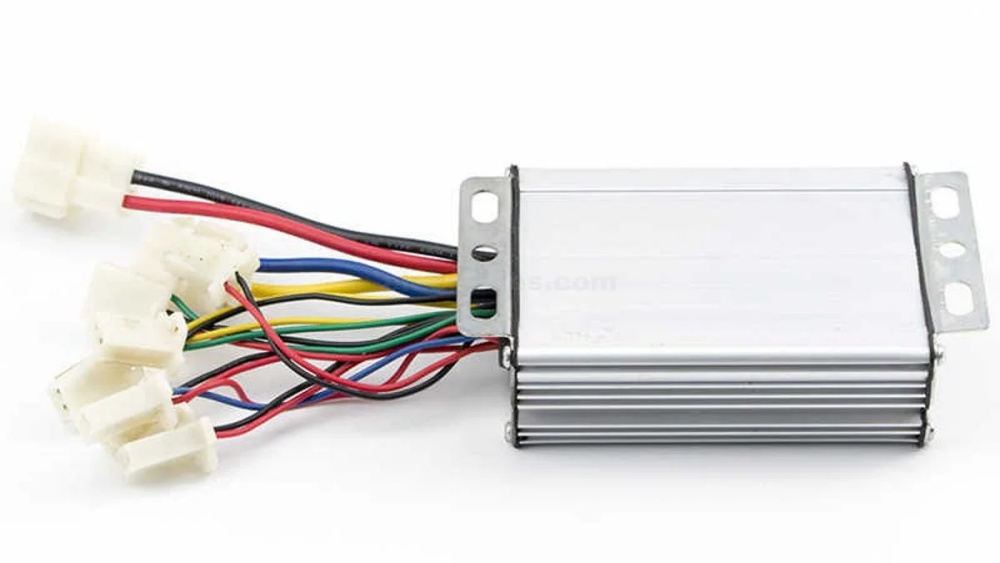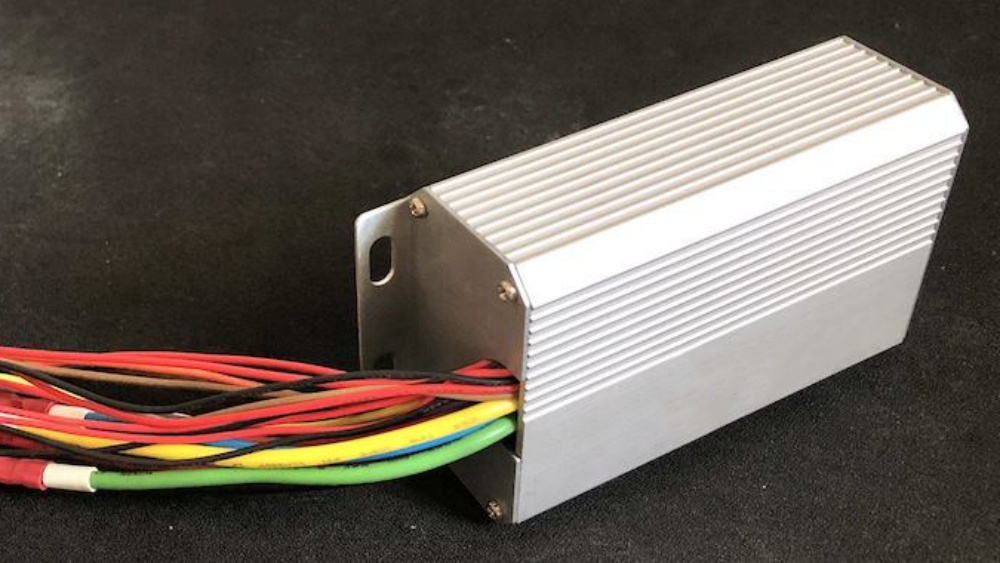Getting to know electric bike controllers better
An electric bike controller is an integral part of the electric bikes found around you. It acts as the brain of the e-bike and maintains all aspects of it.
The controller helps you control the speed of the bike, the power of the motor, and more. In this article, you will learn about electric bike motor controllers and tips for choosing the right one for your needs.
What is an e-bike controller?
An e-bike motor controller is a specific component that connects electrical parts to make the bike perform better. The device connects displays, throttles, motors, pedal assistants, batteries, and other sensors, among others.
 In short, an e-bike controller acts as the brain of the e-bike. And, it manages all the functions of the bike effectively. Generally, these controllers come in a protective sealed case. You can place the controller on the bike like an add-on device.
In short, an e-bike controller acts as the brain of the e-bike. And, it manages all the functions of the bike effectively. Generally, these controllers come in a protective sealed case. You can place the controller on the bike like an add-on device.
Ae ui i lea, some controllers are designed in such a way that you can mount them inside the bike’s main frame. This way, it stays hidden. Most of the controllers you find come in sealed boxes for better protection.
How do e-bike controllers work?
Essentially, the electric motor in an e-bike converts electrical energy into mechanical energy so that the bike gets the power it needs to perform. The controller gets the energy from the battery. It transfers the energy to the motor based on user inputs and sensors.
When you turn the throttle, you can adjust the energy of the bike controller. Thus, it helps you to control the speed of the bike. An e-bike motor controller is responsible for tracking pedal activity, battery voltage, motor power, acceleration, speed, and other important features on your e-bike.
Additionally, it controls the pedal assist you receive while riding your bike. Ae ui i lea, regional laws define the extent to which you can use a throttle-equipped e-bike.
Different types of e-bike controllers explained
E-bike controllers are categorized based on certain criteria. This is their explanation.
1. E-bike controllers by motor type
Brushed DC Motor Controller
This type of controller is equipped with permanent magnets and collectors. Moreover, the design of the controller is simpler. The controller is a set of buttons that regulate the amount of electricity delivered to the motor.
Therefore, the higher the current, the higher the power, and the lower the current, the lower the power. Such controllers are commonly found in electric bicycles, scooters and light electric vehicles. In addition, these controllers are easy to use and are preferred by DIY enthusiasts and hobbyists.
Brushless DC Motor Controller
You can find brushless DC motors and controllers on most e-bikes. They are brushless motors with permanent magnets that provide higher efficiency and reliability. In addition, these controllers are simple to service and operate.
In terms of construction, it looks similar to brushed controllers.BLDC motor controllers have three different phases. Moreover, they are controlled by a set of buttons. Moreover, they have at least two transistors (keys/MOSFETs) per phase. In addition, the keys are 6, 12, 18, etc., all of which are multiples of 6.
2. E-bike controllers by function
BLDC motors with Hall sensor controllers. These types of motor controllers are based on the Hall effect. BLDC motor controller with Hall sensor helps in determining the position of the rotor from the stator. It is the stationary part of the motor and the rotor forms the rotating part. Additionally, it also helps in determining the speed and other attributes required to run a BLDC motor efficiently. Moreover, these sensors called rotary encoders are used to determine the position of the rotor.
Tips for Choosing the Right E-Bike Controller
Following are the factors that should be considered before selecting the right e-bike controller.
1. Controller current rating
When selecting a suitable controller, make sure that the current rating should be lower than the output current of the battery. Generally speaking, the most suitable maximum current for 9-MOSFET e-bike controller is 25A. while for 15-MOSFET, you need 40A and for 6-MOSFET e-bike controller, you need 18A.
2. Controller Power and Voltage
If you are looking for a specific controller with a motor, it is wise to check the power and voltage of the controller. When you buy a non-programmable controller, make sure that the control voltage is the same as the motor voltage. In addition, the controller power should be similar or slightly greater than the motor power.
For example, if the motor voltage is 24 V, the controller voltage should also be 24 V. Ae ui i lea, in the case of programmable controllers, the power range can be limited as needed. In addition, the voltages of the controller, motor, and battery should be matched. As a result, the controller does not heat up and operates stably. Therefore, it improves the reliability of the system.
 3. Whether it is a dual mode controller, non-Hall sensor or Hall sensor controller
3. Whether it is a dual mode controller, non-Hall sensor or Hall sensor controller
If the e-bike motor controller is equipped with Hall sensor, the controller will be dual mode or Hall sensor. The sensor detects the rotation of the motor and the controller generates a voltage based on the signal from the sensor.
The power consumption is low and more stable. In addition, it has greater starting torque. If the Hall sensor does not work, the controller will display an error and stop working while the dual mode controller continues to work.
4. Selecting a Square or Sine Wave Controller
These two types of controllers differ in the voltage phase waveform. One will produce a rectangular waveform while the other produces a sine waveform. Sine waves are popular because they produce low noise. In addition, they can provide great efficiency when you are driving your e-bike uphill or carrying cargo.
5. Battery and phase current
You should make sure that the phase current and the battery current are the same. When the controller provides excessive current to the controller, the controller will heat up more. The phase current in the e-bike controller should match the motor current.
Unlocking Potential: Understanding E-Bike Control Systems
E-bikes are equipped with sophisticated control systems that determine the bike’s performance, speed and overall riding experience. Let’s take a closer look at the key components and functions of these e-bike controls.
Power Distribution: The Brain Behind the Wheel The power distribution system ensures a smooth flow of energy from the battery to the motor. Discover the controller’s role in regulating power output, optimizing battery efficiency, and providing a seamless riding experience.
SPEED REGULATION: RIDE AT YOUR OWN PACE Discover how e-bike controllers control speed and maintain consistency. From pedal assist modes to throttle-based acceleration, these systems offer customization options to meet a variety of riding preferences and legal requirements.
Torque Sensing: A Natural Connection Learn about torque sensing technology, a feature that ensures harmonious interaction between the rider and the electric motor. Learn how these controllers detect pedal pressure and provide precise power assist for a natural, intuitive riding experience.
Regenerative Braking: Energy Regeneration Explore the concept of regenerative braking, a cutting-edge technology that converts kinetic energy into electrical energy that recharges the battery during braking. Learn how the e-bike controller plays a key role in realizing this sustainable and efficient function.
Display and control interfaces: Take control of your riding experience The control interfaces integrated in e-bike controllers bring convenience. From the LCD display to smartphone connectivity, these interfaces provide real-time information, customizable settings, and seamless control over a variety of functions to enhance your overall riding experience.
Faaiuga
There is no shortage of different types of e-bike controllers on the market. Certain features such as voltage, control features, controller size, ma isi. are crucial for the better functioning of your e-bike. Hence, consider the parameters discussed above while choosing the right one.
Have any questions? Contact us! Let our well-designed Electric Bike and quality outdoor accessories take you on a journey to explore nature and unleash your passion for unlimited adventure!
 shuangye oloa fafo
shuangye oloa fafo
